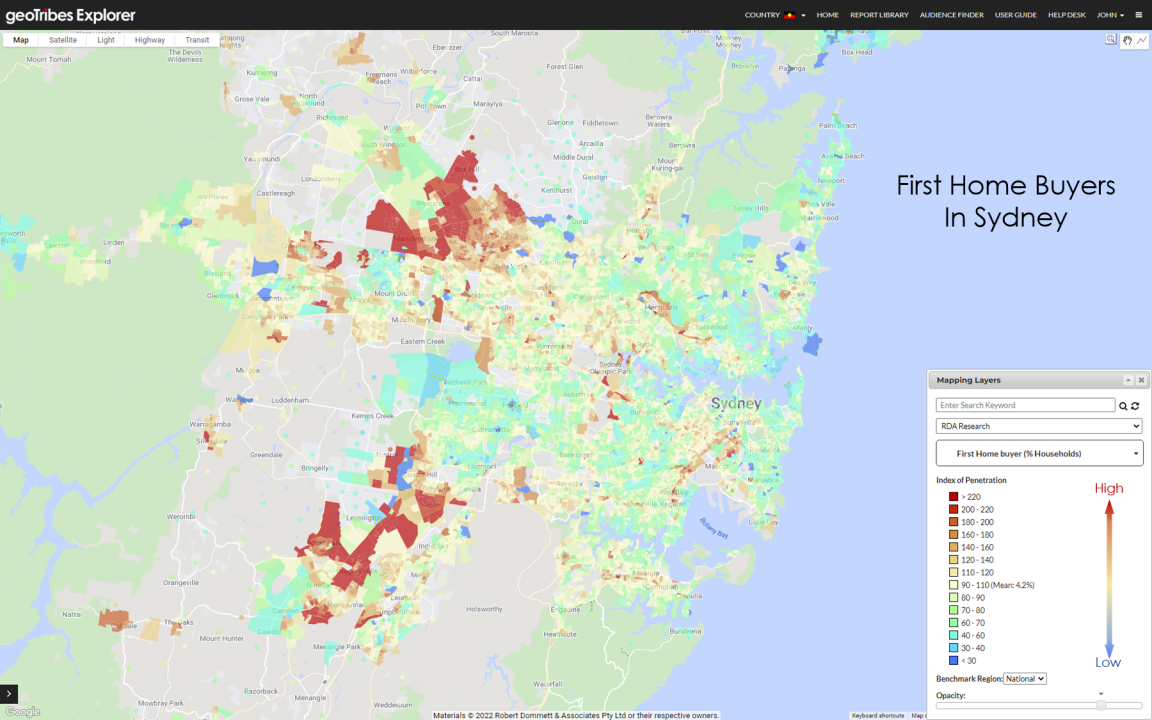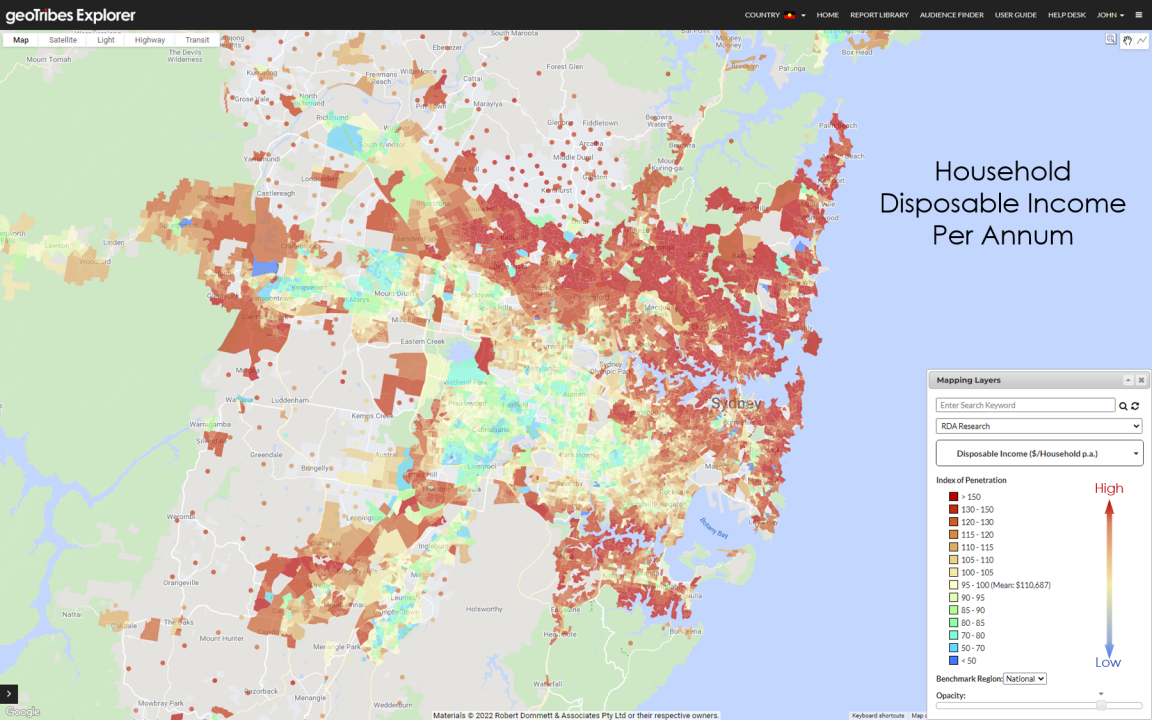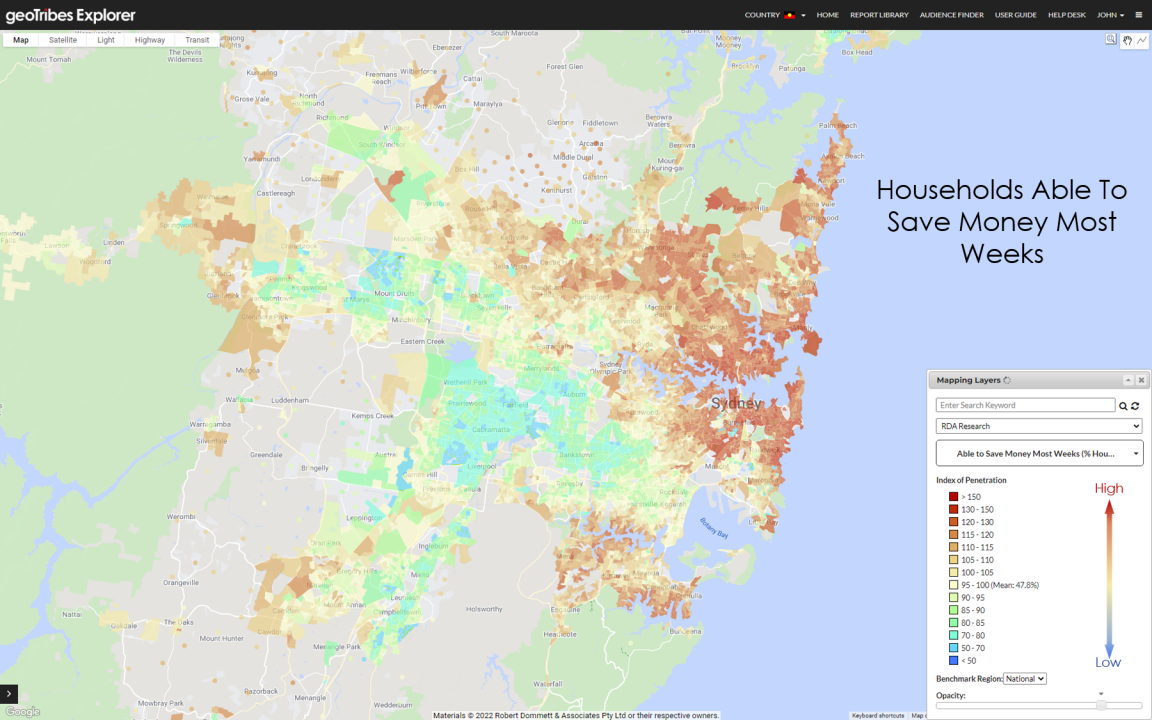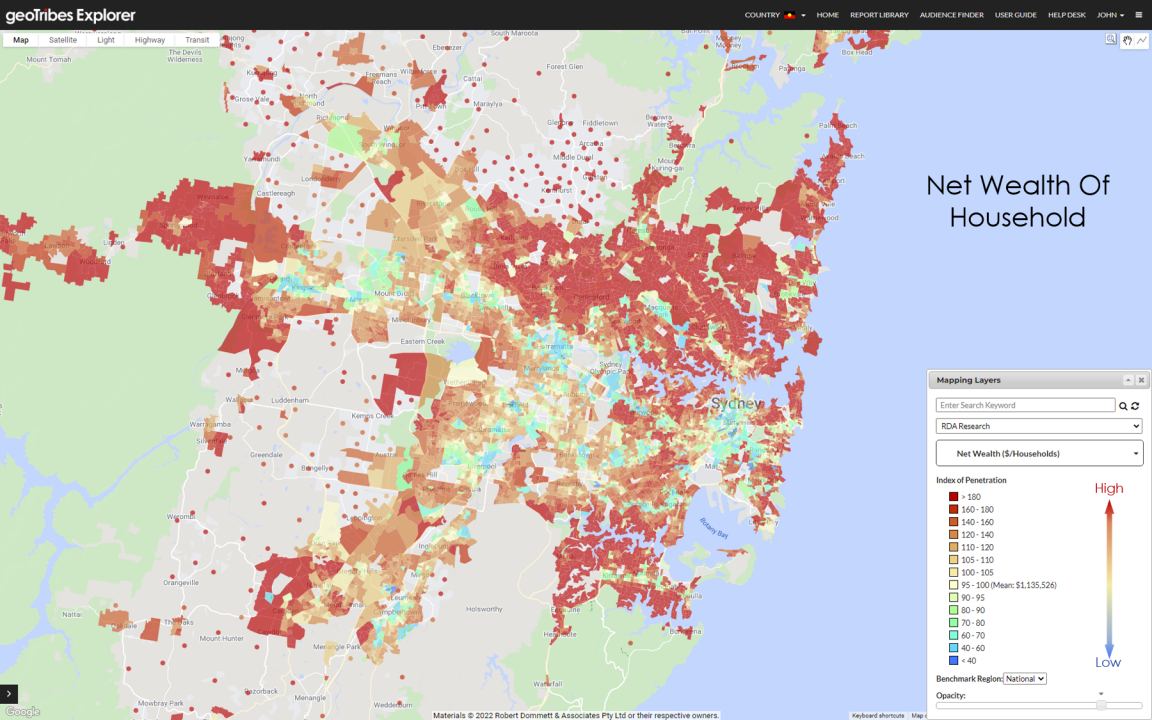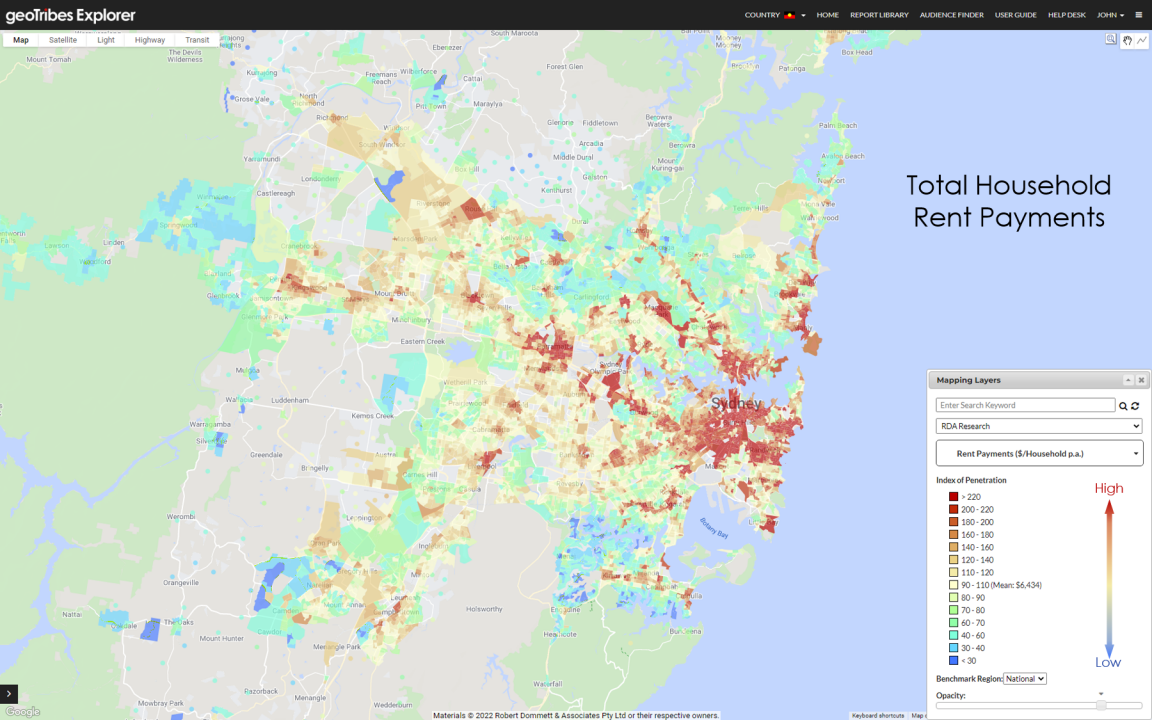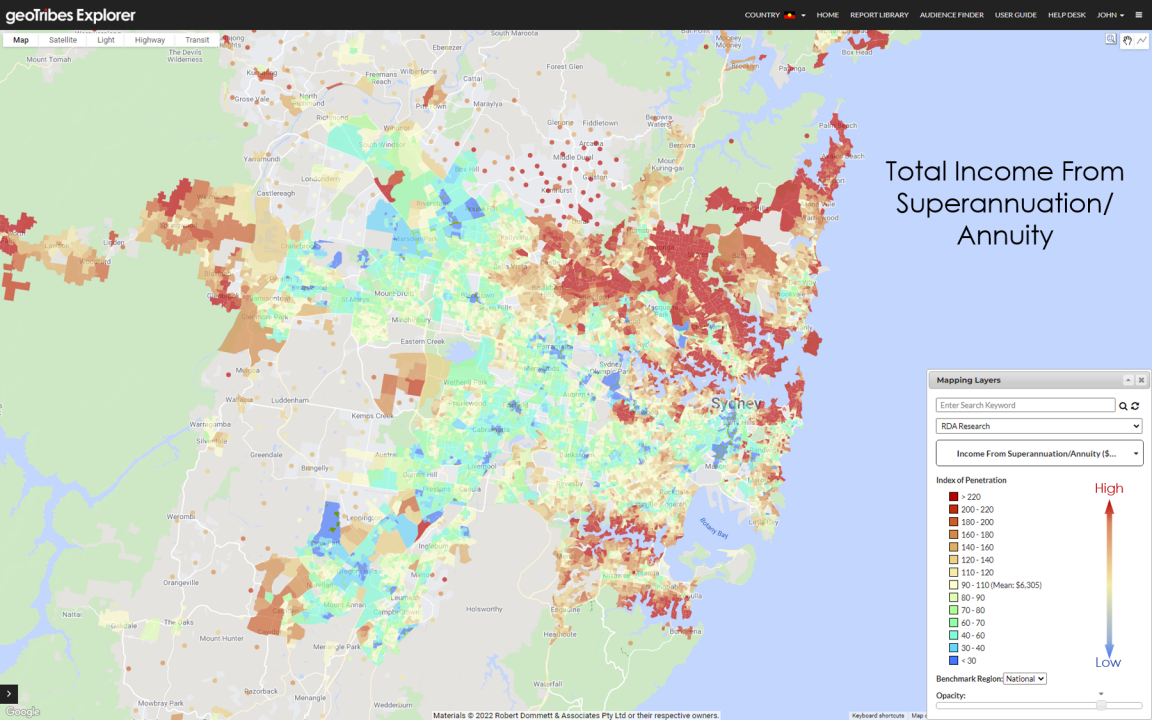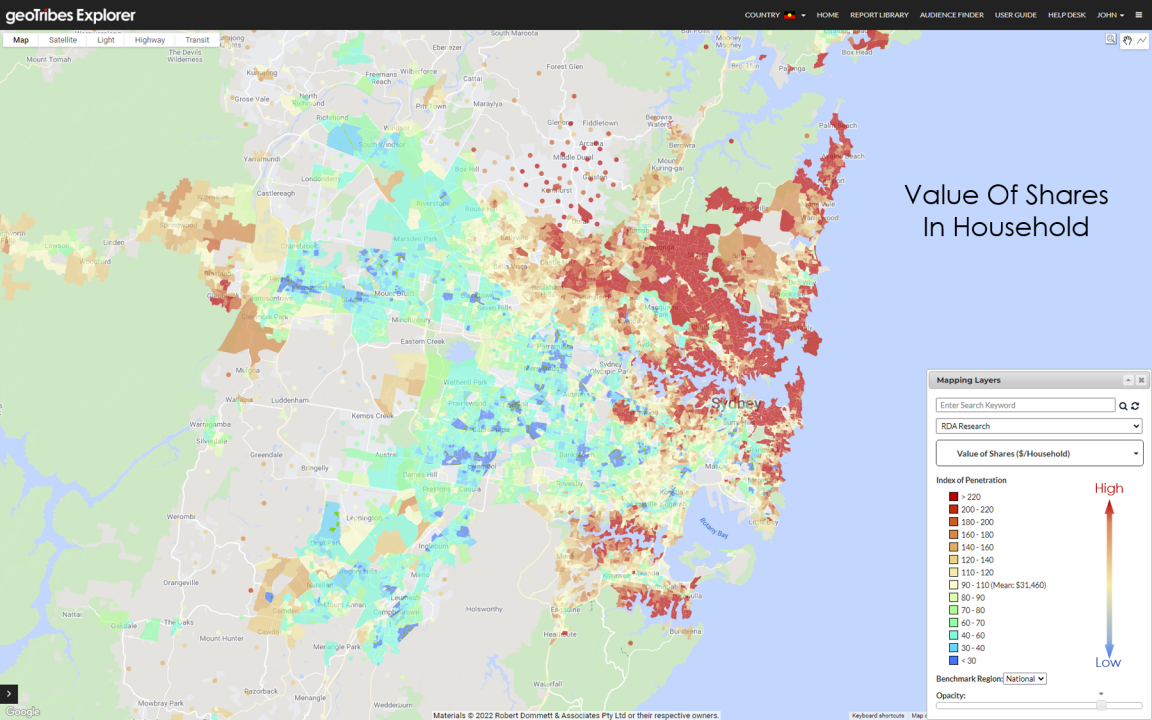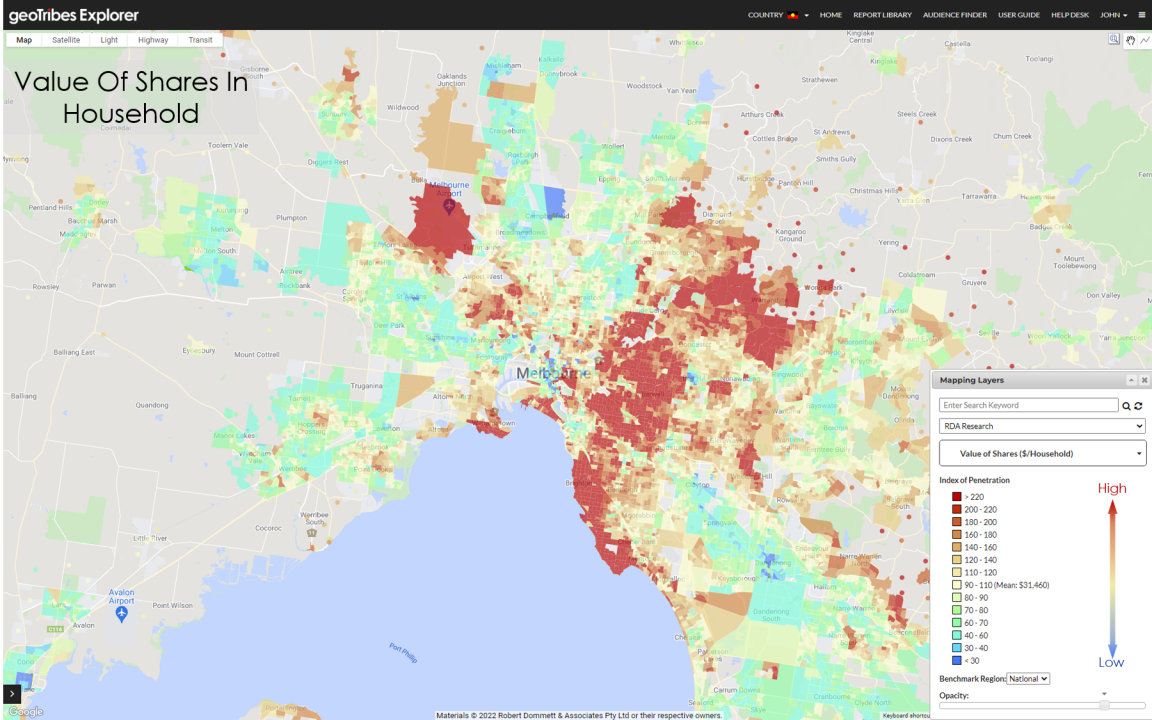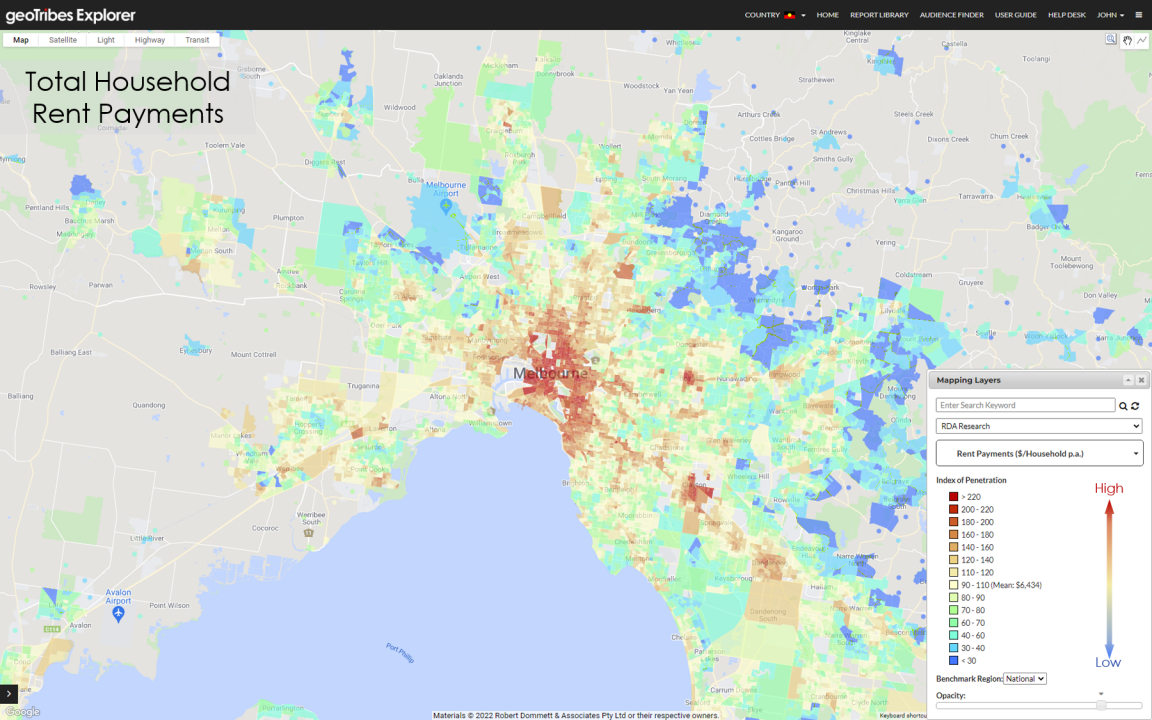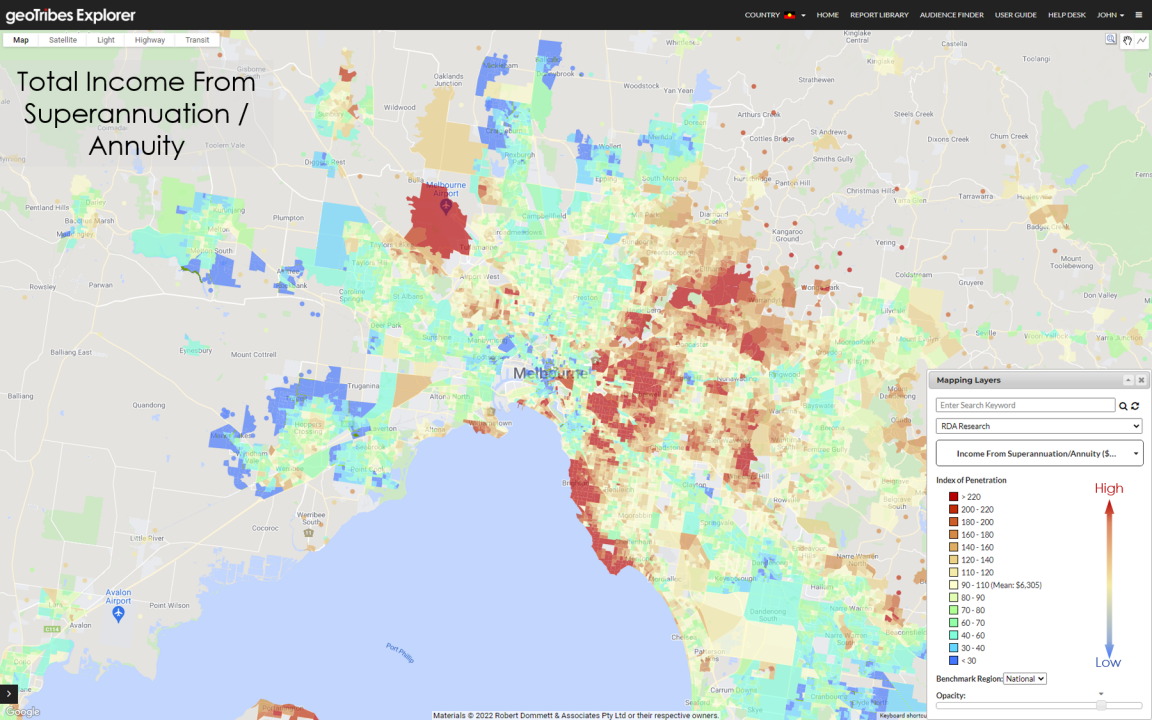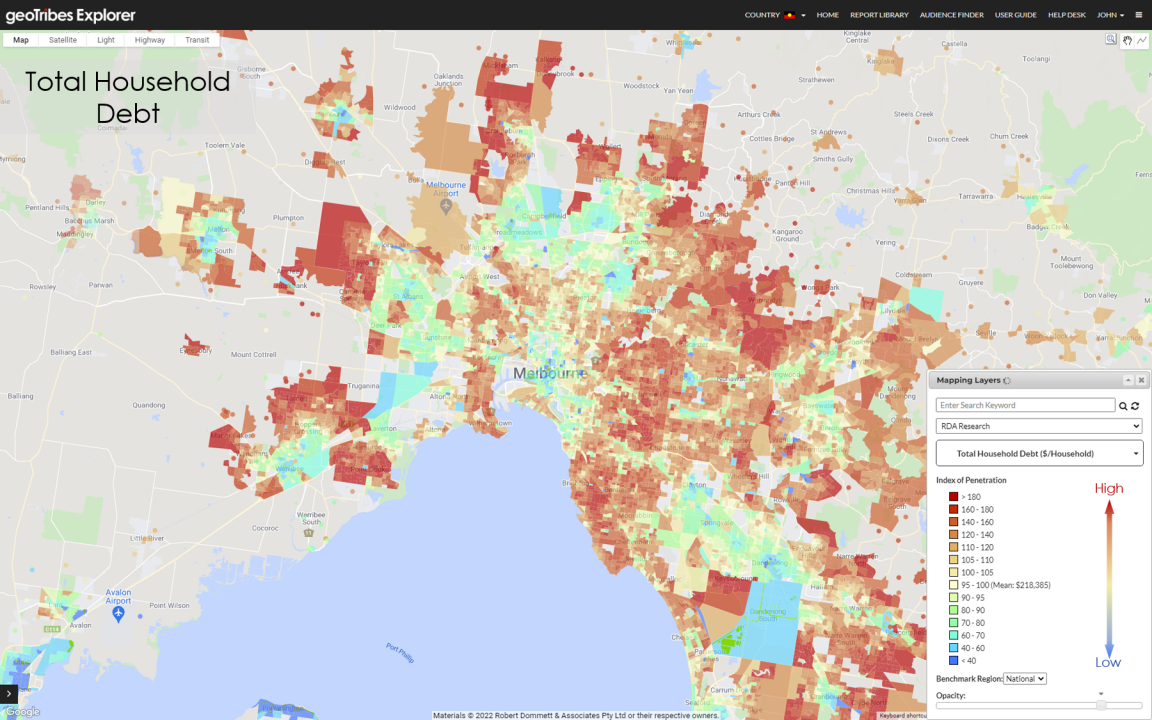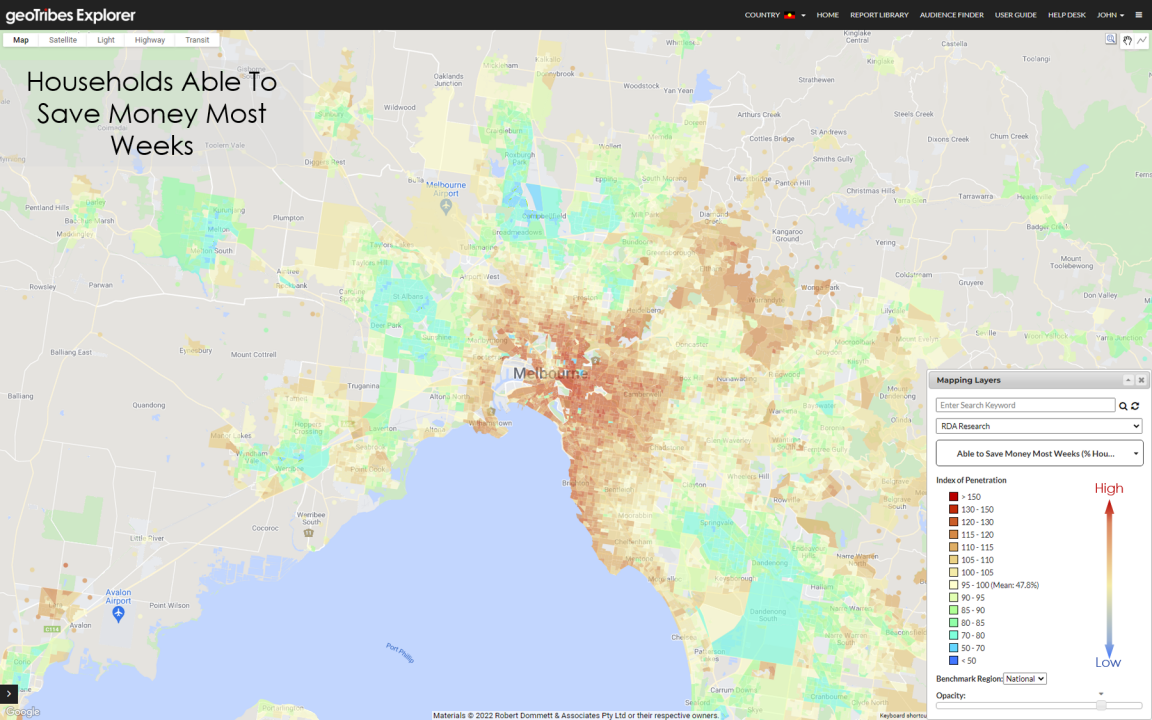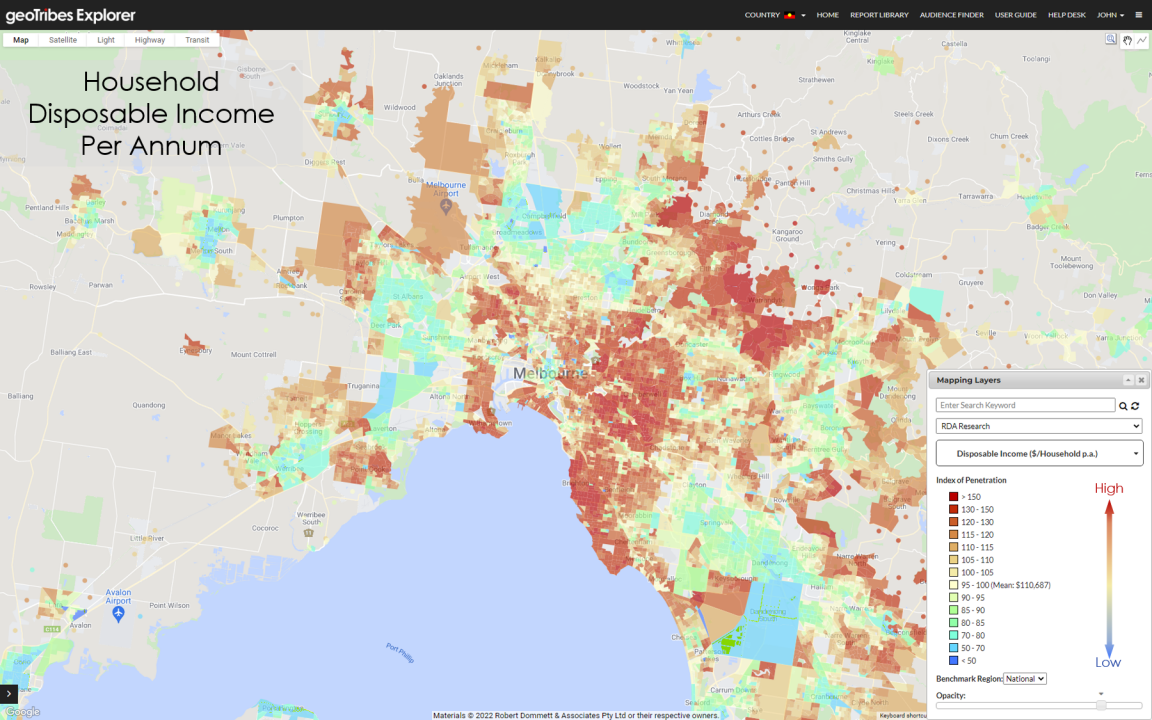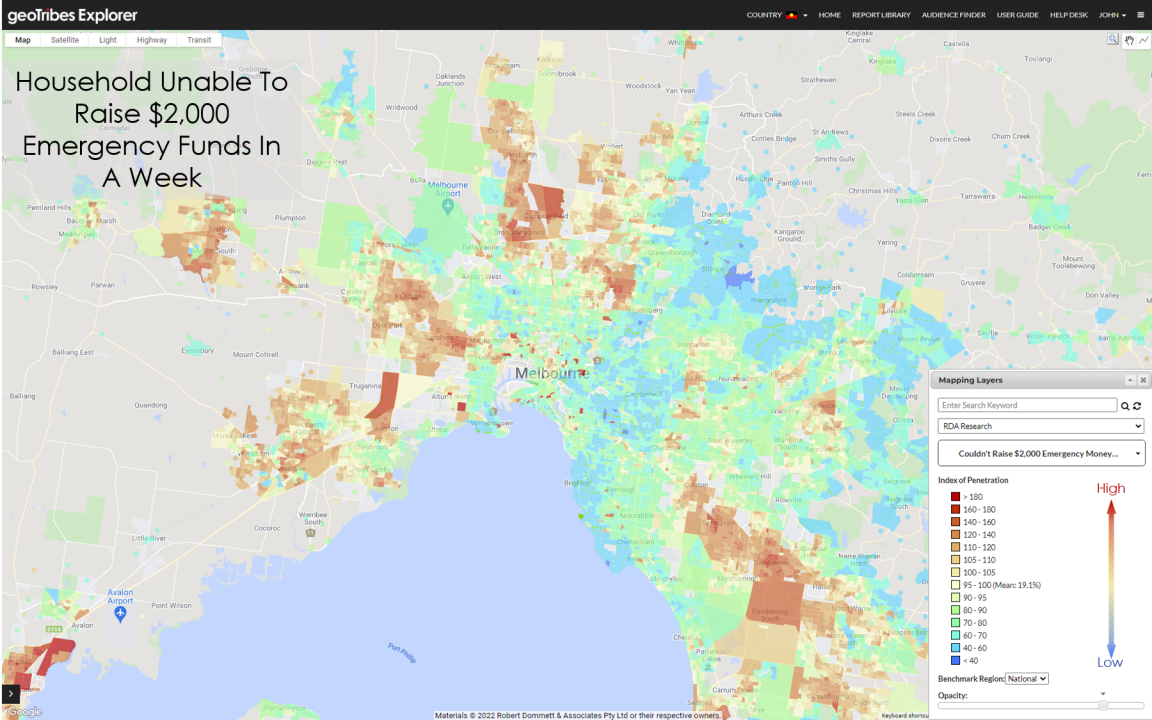With rising inflation and interest rates in the Australian retail finance market, the need for accurate targeting of financial capacity has become a crucial concern for market analysis and media targeting. With this in mind, RDA is pleased to announce an upgrade to its Household and Person Economics data in the geoTribes Explorer, Quick Append and Living Insights websites. This substantially revised data pack of 108 variables, Includes…
Assets: 24 Variables, for example…
- Value of Investable Assets
- Value of Financial Institution Accounts
- Value of Superannuation Funds
- Value of Household Contents
- Value of Vehicles
Financial Indicators: 34 Variables, for example…
- Household Debt Service Ratio
- Private Hospital Cover
- Made Voluntary Contributions Towards Superannuation
- Couldn’t Raise $2,000 Emergency Money in a Week
- Went Without Dental Treatment due to Shortage of Money
Income: 28 Variables, for example…
- Disposable Income
- Income From Wages
- Income From Government Pensions/Allowances
- Income From Investments
- Income From Superannuation/Annuity
Liabilities: 22 Variables for example…
- Total Household Debt
- Principal Outstanding on all Loans
- Principal Outstanding on Personal Loans
- Credit Card Debt
- Mortgage Repayments
Where does the data come from?
The confidentialised data from the ABS’s 2020 Survey of Income and Housing (SIH) was projected to the national population in a proprietary process based on Synthetic Population Models that accurately represent the total household and person populations of Australia. The fine granularity of the Synthetic Population models which have many millions of georeferenced individual synthetic records and deep sociodemographic profiling means that the database the Household and Person estimates are more accurate than using regular geodemographic systems. The data from the synthetic population models is aggregated to SA1 level for upload into the geoTribes Explorer and to the level of SA1 + Dwelling Type + Age Band + Gender to create over 3M+ unique levels for data enhancement through the Quick Append and Living insights websites.
Because the data is made from cohorts of synthetic people, it can be used with absolute privacy confidence.
Sydney:
What Can I Do With it?
The Household and Person Economics data supports a broad range of use cases including…
Improved Audience Selection
The Household and Person Economics measures can be used directly as geospatial audience measures in the geoTribes Explorer and in combination with a broad range of demographic measures in the Audience Finder. When appended to a customer database, the individual measures can be used to define audience segments or combined to create lookalike models.
Customer Needs Profiling
After appending the Household and Person Economics variables to a customer database, they can be used to create indexed profiles relative to the market to give deep insights into how the overall database or individual segments compare to the market.
This is particularly useful for determining differences in financial capacity for database segments and identifying database records with a high likelihood of experiencing financial distress.
Cluster Analyses
After appending the Household and Person Economics variables to customer databases, they can be combined with internal (behavioural) measures to create hybrid segmentation schemes.
See Data Dictionary with the full list of Household and Person Economics variables here.
Melbourne:
If you have any questions about using Household and Person Economics Data in your market planning or as data appends for your first-party data, contact the friendly RDA Technical Team on +61 2 8923 6600 or send an email to contact@rdaresearch.com

